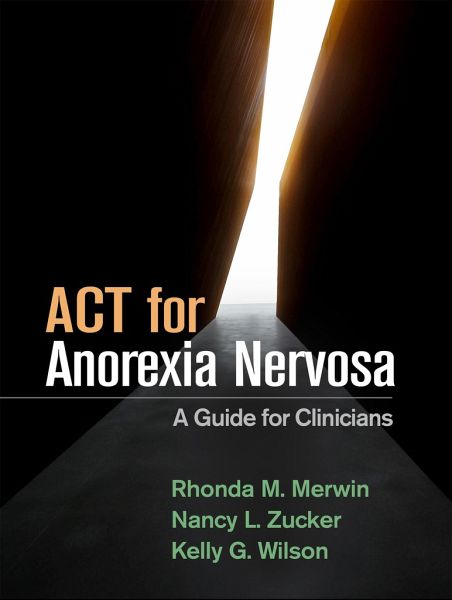
ACT for Anorexia Nervosa
A Guide for Clinicians
Versandkostenfrei!
Versandfertig in über 4 Wochen

PAYBACK Punkte
31 °P sammeln!




This is the first book to present a roadmap for tailoring acceptance and commitment therapy (ACT) to the serious, complex challenges of anorexia nervosa (AN). Leading authorities describe interventions grounded in ACT core processes
Rhonda M. Merwin, PhD, is Associate Professor in the Department of Psychiatry and Behavioral Sciences at Duke University Medical Center. She is Director of the ACT at Duke Program, which conducts training, clinical services, and research in acceptance and commitment therapy (ACT), and is a core clinical, research, and teaching faculty member at the Duke University School of Medicine. Dr. Merwin's career has focused on using contextual behavioral science to understand and treat anorexia nervosa and maladaptive eating and weight control among individuals with type 1 diabetes. Dr. Merwin is recognized as an ACT trainer and has collaborated with the Duke Center for Eating Disorders since 2006. Nancy L. Zucker, PhD, is Associate Professor in the Department of Psychiatry and Behavioral Sciences at Duke University Medical Center. She is Director of the Duke Center for Eating Disorders and a core clinical, research, and teaching faculty member at the Duke University School of Medicine. Widely published, Dr. Zucker is an author of the American Psychiatric Association's revised practice guidelines for the treatment of eating disorders, currently under development. Dr. Zucker's clinical work and research focus on how to help young people develop a healthy awareness of their bodies' signals, and learn to match these signals to actions that allow them to flourish. Kelly G. Wilson, PhD, is Professor of Psychology at the University of Mississippi. He is a codeveloper of acceptance and commitment therapy (ACT). Dr. Wilson is coauthor of Acceptance and Commitment Therapy, Second Edition, and has published numerous other books, articles, chapters, treatment manuals, and technical reports. Dr. Wilson trains and consults internationally on the design and implementation of behavioral treatments. His work includes the investigation of acceptance, mindfulness, and values-oriented strategies in the treatment of a variety of problems in living, as well as in the basic behavioral science underlying therapeutic change.
Produktbeschreibung
- Verlag: Guilford Publications
- Seitenzahl: 286
- Erscheinungstermin: 9. Juli 2019
- Englisch
- Abmessung: 279mm x 211mm x 23mm
- Gewicht: 885g
- ISBN-13: 9781462540358
- ISBN-10: 146254035X
- Artikelnr.: 54914165
Herstellerkennzeichnung
Libri GmbH
Europaallee 1
36244 Bad Hersfeld
gpsr@libri.de
Für dieses Produkt wurde noch keine Bewertung abgegeben. Wir würden uns sehr freuen, wenn du die erste Bewertung schreibst!
Eine Bewertung schreiben
Eine Bewertung schreiben
Andere Kunden interessierten sich für











